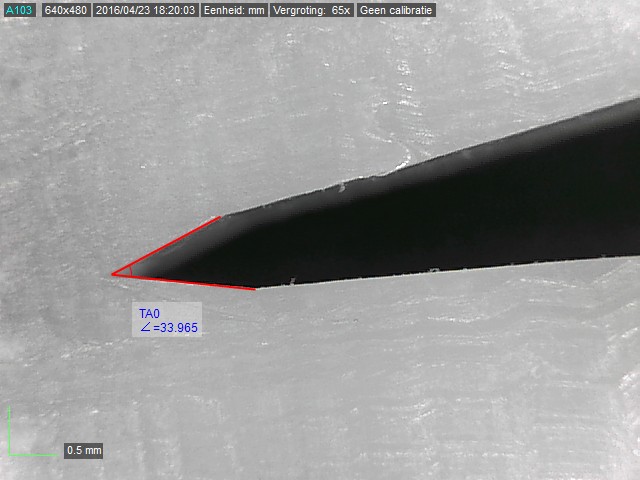Alan’s right. Especially about using an AngleCube. Besides using it to set your bevel angles, you also use it to confirm the verticality of the blade. If the blade is leaning to one side or the other, you can measure the difference and adjust your left and right side bevel angles accordingly.
Generally, flat blades clamp up in a nice vertical position, even though the right side jaw is movable while the left is fixed. Adjust the upper and lower screw settings to keep the right jaw parallel to the left. Remember that the upper screw is used only to set the distance between the jaws. The lower screw applies the clamping force. If the blade is vertical, the only contributor to error is half the thickness of the blade – maybe tenths of a degree difference.
Blades which are not flat (the main grinds are not parallel to each other) require some finesse. Some guys use different types of tape to increase the stability of the blade and allow for a little bit of adjustability.
For full flat grind (FFG) blades which don’t clamp easily in the vertical position in the Gen 1 vise, I try to clamp with the left side vertical and the bottom of the right jaw kicked out so as to get the right jaw flat against the right side of the blade. Then I set the bevel angles to match the left lean angle of the blade centerline. For some users, this is quite confusing and the Gen 3 vise upgrade makes it unnecessary.
If you don’t have one already, I have to recommend the DXL360 Digital Protractor ($53.99 from Amazon). I have the Igaging and Wixey angle cubes and the DXL360 is a joy to use compared to them. You just have to remember to turn it off when you’re done using it to preserve the battery.
2 users thanked author for this post.
